The Promise of Metaverse: A New Horizon for Inclusive Education
Imagine a world where the barriers to accessing high-quality education are dismantled, one line of code at a time. The metaverse—a collective virtual shared space, created by the convergence of physical and virtual realities—holds the potential to radically transform the educational landscape. This digital frontier opens up a new horizon for inclusive education, promising to make learning more accessible, engaging, and tailored to the needs of each student. Let’s explore how the metaverse could give rise to an era of unprecedented educational opportunity.
Leveraging Virtual Spaces for Barrier-Free Learning
In the realm of the metaverse, physical limitations such as geographical borders and mobility restrictions cease to exist. Learners from any corner of the globe can congregate in virtual classrooms, engage with immersive content, and participate in interactive experiences that rival real-world interactions. This digital melting pot fosters a rich exchange of ideas and cultures, representing a truly inclusive environment where diversity is celebrated and learning is unbounded.
Personalized Learning Trajectories
In the metaverse, education can be highly individualized to cater to each student’s needs and learning pace. The use of advanced analytics and artificial intelligence enables educators to create personalized learning paths. With immediate feedback and adaptive learning strategies, students are empowered to take ownership of their education journey. As they interact with virtual learning modules, each triumph and challenge is recorded, fine-tuning the learning process to optimize understanding and retention.
Enriching Education with Interactive and Immersive Experiences
- Active Participation: In the metaverse, lessons are not just absorbed; they are experienced. Through the use of avatars, students can undertake simulations, collaborate in real-time on projects, and gain hands-on experience in a virtual environment that mirrors the complexities of the real world.
- Engagement through Gamification: The metaverse employs gamified learning, where educational content is woven into the fabric of engaging games. This approach captures the attention of learners, helping to combat distractions and promote deeper involvement.
- Access to Diverse Perspectives: Virtual exchange programs within the metaverse enable students to engage with peers from different cultural backgrounds without ever leaving their virtual campus, broadening their horizons and promoting a global mindset.
The metaverse stands as a beacon of hope for a more inclusive and equitable educational system. By emulating real-life scenarios within a controlled virtual ecosystem, students are given the unique opportunity to learn, grow, and thrive in a diverse and unfettered environment. As we stand on the cusp of this new horizon, it’s clear that the metaverse promises a future where learning is limited only by the imagination.
Breaking Boundaries: How the Metaverse Fosters Educational Equity
The Metaverse, a collective virtual shared space, created by the convergence of virtually enhanced physical reality, augmented reality (AR), and the internet, has opened doors to educational opportunities like never before. With the increasing availability and sophistication of technology, it is reshaping the landscape of learning and breaking down the barriers that have traditionally hindered educational equity.
The Gateway to Universal Access to Education
In the realm of the Metaverse, geographical distances and physical limitations are rendered obsolete. Learners from all corners of the globe can now interact in a shared, virtual environment. This universal access democratizes education, providing students, regardless of their socioeconomic status, with opportunities to engage with high-quality learning materials and experiences. Classrooms are no longer constrained by four walls, enabling educators to reach a more diverse student population and promote inclusivity.
Personalized Learning Paths within the Metaverse
The Metaverse inherently advocates for individualized learning by offering personalized paths that cater to the unique needs and learning styles of each student. Through AI-driven platforms within the Metaverse, learners can pace themselves and focus on areas they need to improve, while excelling in others at their own speed. This tailored approach helps in closing the achievement gap and supports students with special needs or those who require more attention.
Overcoming Economic Disparities in Education
The cost of education has often been a boundary for many potential learners. However, the virtual nature of the Metaverse significantly reduces the cost associated with physical resources and infrastructure, making it more affordable for institutions to offer and for students to access. This cost-effective feature of the Metaverse creates an environment where learners are not limited by their financial situation, contributing to a more equitable education system.
The Role of Immersive Technologies in Boosting Engagement and Retention
Immersive educational experiences in the Metaverse contribute profoundly to student engagement and knowledge retention. Interaction with three-dimensional models, virtual experiments, and real-time simulations not only makes learning more interesting but also allows students to grasp complex concepts with greater ease. These interactive experiences in the Metaverse can transform abstract ideas into tangible learning, making education both accessible and impactful for all students.
Tools of Engagement: Navigating Metaverse Accessibility for Diverse Learners
Inclusive Design: Crafting Accessible Virtual Environments
To address the challenge of accessibility in the metaverse, it’s essential to integrate inclusive design principles from the outset. These principles guide the creation of environments that anyone can use, regardless of age, disability, or background. By embedding features like customizable avatars that represent a spectrum of human diversity and incorporating assistive technologies such as voice recognition and text-to-speech, the metaverse can become a welcoming space for all learners.
Delving into Diverse Learning Styles with Metaverse Tools
Recognizing that every learner is unique, the metaverse offers an array of tools to cater to different learning styles. For visual learners, 3D modeling and interactive simulations make complex concepts easier to grasp. Auditory learners can benefit from spatial audio cues and live discussions within virtual spaces. Kinesthetic learners get to interact with the metaverse through gesture-based controls and full-body VR experiences. The blend of these multidimensional tools fosters an environment where everyone can find their optimal pathway to knowledge.
Educational Equity Through Adaptive Learning Technologies
Critical to the metaverse’s inclusive mission is the use of adaptive learning technologies. These systems tailor educational content to the individual’s learning pace, style, and interests. By utilizing data analytics, the metaverse can assess each learner’s progress and adapt in real-time, ensuring that no one is left behind. Features like real-time language translation and closed captioning are instrumental in accommodating non-native speakers and the hearing impaired, demonstrating how technology can bridge gaps in learning accessibility.
Building a Community: Collaboration and Support in the Metaverse
One of the most significant aspects of the metaverse is its capacity to build communities. Through social VR platforms and virtual events, learners can connect, share experiences, and support one another’s growth. Structured peer-to-peer learning and mentorship programs within the metaverse enhance this sense of community, providing opportunities for collaborative learning and knowledge exchange. By fostering a supportive network, the metaverse amplifies the learning experience, allowing diverse learners to thrive together.
Fostering Accessibility: The Road Ahead
While strides are made every day towards an accessible metaverse, there’s still a long journey ahead. Constant evaluation and feedback from the learner community will shape the evolution of this digital learning space. Developers, educators, and learners must collaborate to identify barriers and innovate solutions. With ongoing commitment and creativity, we can harness the full potential of metaverse tools to create a future where education is not just a place you go but a journey you take—all without leaving your home.
Addressing the Challenges: Making the Metaverse Inclusive for All
The metaverse, a collective virtual shared space created by the convergence of virtually enhanced physical and digital reality, promises a future of boundless exploration and interaction. However, to ensure it becomes a space where everyone feels welcome and represented, understanding diversity is fundamental. The term diversity encompasses differences in race, gender, age, ability, and more. It implies that the metaverse should not only be accessible but also comfortable and engaging for users from all walks of life.
Technical Accessibility
At the core of an inclusive metaverse is technical accessibility. Developers must integrate features that allow individuals with different physical abilities to navigate and interact within these spaces effectively. This could include voice recognition software for those who cannot use traditional input devices, or alternative text descriptions for users with visual impairments. By prioritizing accessibility from the onset, the metaverse can be designed to adapt to a diverse user base.
Cultural Representation
Beyond the technical, cultural representation plays a vital role in creating an inclusive metaverse. It is important that virtual environments reflect the multicultural reality of our society. This means incorporating a wide range of languages, customs, and visual representations within the metaverse, allowing users to express their identity and find communities they resonate with.
Eradicating Digital Bias and Promoting Equity
A challenge that must be confronted head-on is the elimination of digital bias. Algorithms that drive experiences in the metaverse can perpetuate stereotypes and inequality if not designed with equity in mind. A conscious effort is required to ensure that these algorithms are fair and do not reinforce existing disparities.
Developing Ethical Guidelines
For fostering an environment of fairness, the formulation of ethical guidelines for the creation and moderation of metaverse content is crucial. This would involve guidelines that prevent the dissemination of harmful stereotypes and promote positive interactions among users.
Equitable Opportunities
Creating equitable opportunities within the metaverse for creators from underrepresented communities also promotes inclusivity. Scholarships, educational resources, and platforms that elevate diverse voices can help to democratize content creation within the metaverse, ensuring it evolves as a reflection of our diverse society.
Encouraging Participation and Creating Safe Spaces
An inclusive metaverse is one where users not only have access but also feel encouraged to participate actively. This means implementing systems that protect users from harassment and discrimination. Community guidelines, reporting tools, and responsive moderation are essential in maintaining safe virtual spaces.
Building Communities and Fostering Belonging
Community building is vital for fostering a sense of belonging among users. It’s important for the metaverse to have tools that enable users to establish and manage their communities, creating niche spaces where individuals can connect over shared interests and experiences. This nurtures a sense of connection and mutual respect among users.
Educational Efforts for Inclusivity
Lastly, consistent educational efforts should be made to enhance users’ understanding of inclusivity. Workshops, tutorials, and resources on navigating the metaverse in a respectful and inclusive way should be readily available. Empowering users with knowledge encourages a collective responsibility to uphold the values of inclusivity within the metaverse.
The Future of Learning: Evolving Metaverse Inclusivity Standards
As we look towards the horizon of educational technologies, the metaverse emerges as a ground-breaking tool with the potential to reshape our learning experiences. Central to maximizing its benefits is the commitment to inclusivity. By designing virtual learning environments that are welcoming and accessible to all, we champion diversity and empower individuals regardless of their physical abilities, socio-economic backgrounds, or geographic locations. Proactive inclusivity ensures that these digital realms do not perpetuate real-world disparities but offer a level playing field for learners worldwide.
Setting Universal Inclusivity Standards in the Metaverse
To forge a metaverse that’s truly inclusive, we must establish and uphold universal inclusivity standards. These standards guide the creation of digital content that is perceptible, operable, understandable, and robust for everyone. User-centric design principles demand that interfaces accommodate a range of disabilities, providing alternative ways to interact and engage with content. This could mean voice navigation for the visually impaired, captioning for the hearing impaired, or translation services for non-native speakers. Consequently, learning in the metaverse becomes an accessible and immersive experience, cultivating a diverse educational ecosystem.
Creating Inclusive Content in the Metaverse
- Develop responsive designs that adapt to various devices and support assistive technologies.
- Implement flexible control schemes enabling input through multiple methods such as voice, gaze, or gesture commands.
- Incorporate AI-driven personalization to adjust the learning environment according to individual needs and preferences.
- Ensure that educational content is culturally sensitive and promotes global understanding.
Strategic Collaboration for Inclusive Learning
Achieving inclusivity in the metaverse demands a concerted effort from technologists, educators, policy makers, and learners themselves. Strategic collaboration bridges the gap between vision and reality, driving innovation while grounding it in ethical practices. Partnerships between academia and tech companies are pivotal in developing inclusive curriculums and engaging learning platforms. It’s through this collective endeavor that we can realize a metaverse that doesn’t just mirror but elevates our aspirations for a more inclusive future of learning.



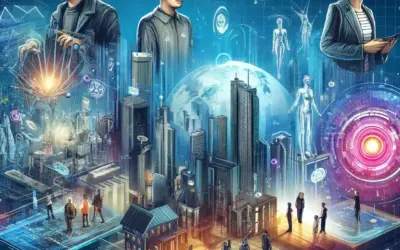


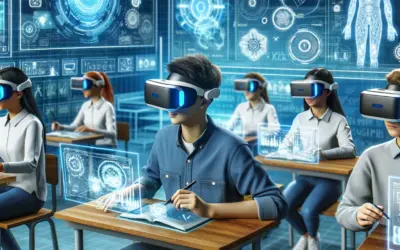
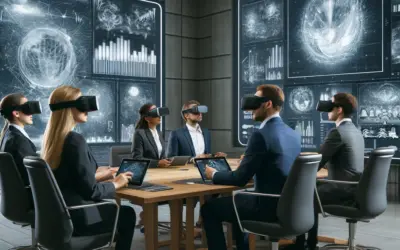
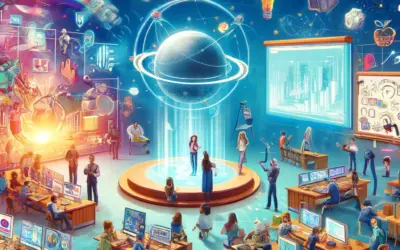
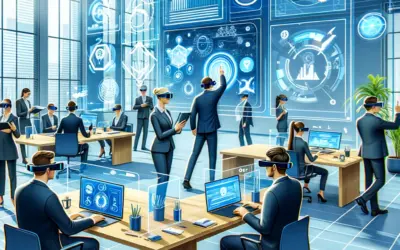



0 comentarios